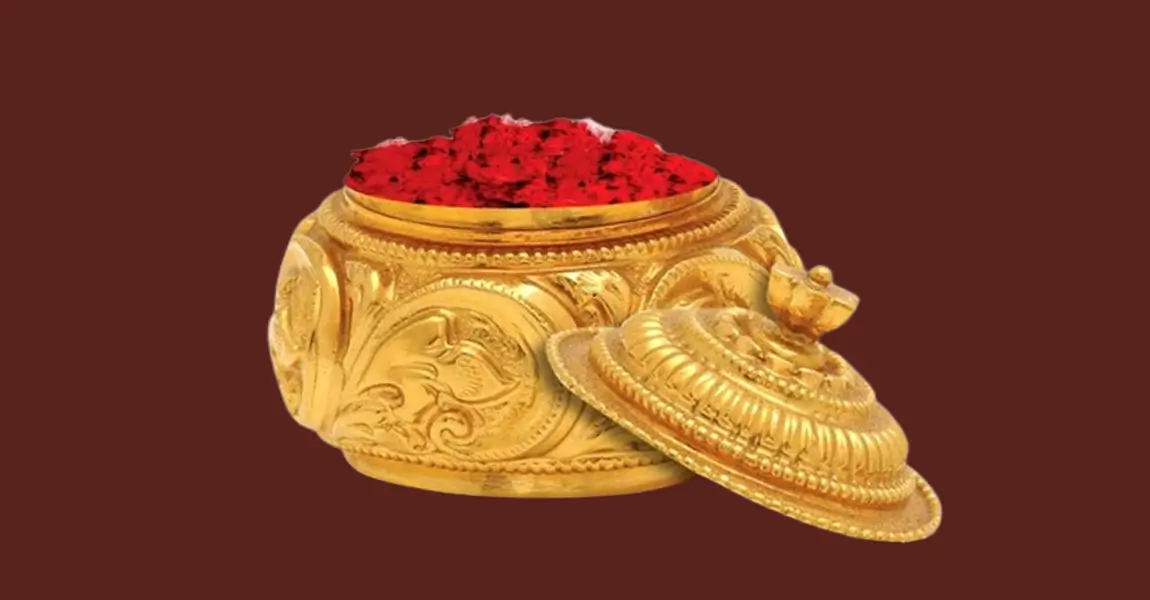Kumkumam: Exploring the Scientific and Spiritual Significance

Kumkumam, also known as vermilion or sindoor, holds significant cultural, religious, and scientific importance in Hinduism. Here’s a brief overview of its significance.
Cultural and Religious Significance
- Kumkumam is considered sacred and is often used in religious rituals, ceremonies, and worship in Hinduism. It is applied as a mark on the forehead, known as a bindi, representing the third eye or a symbol of auspiciousness and marital status.
- Married Hindu women traditionally apply Kumkumam as a symbol of their marital status and to seek the longevity and well-being of their husbands. It is an integral part of bridal adornment and is believed to bring prosperity and good fortune.
- Kumkumam is offered to Hindu deities during prayers and rituals as a mark of devotion and reverence, symbolizing the offering of one’s prayers, wishes, and gratitude to the divine.

Scientific Significance
- The ingredients used in Kumkumam traditionally include turmeric, lime, and natural dyes. Turmeric, the primary ingredient, is known for its antimicrobial, anti-inflammatory, and antioxidant properties. Lime acts as a preservative and enhances the medicinal properties of turmeric.
- Studies have shown that turmeric possesses antimicrobial properties that can help prevent infections and promote wound healing. Applying Kumkumam on the forehead may provide a protective effect against microbial agents and environmental pollutants.
- The application of Kumkumam on the forehead is believed to stimulate certain acupressure points and nerve endings, which may have therapeutic benefits. It is thought to enhance concentration, promote mental clarity, and activate the Ajna chakra, associated with intuition and insight.
- Some researchers suggest that the red color of Kumkumam, derived from natural dyes like turmeric and vermillion, may have psychological effects by eliciting positive emotions, enhancing mood, and boosting confidence.
Overall, Kumkumam holds both cultural and scientific significance in Hinduism. While it is deeply rooted in religious traditions and symbolizes devotion and auspiciousness, its natural ingredients also offer potential health benefits and therapeutic properties. However, it’s important to note that scientific research on the specific effects of Kumkumam is limited, and its significance primarily remains within the realm of cultural and religious practices.
